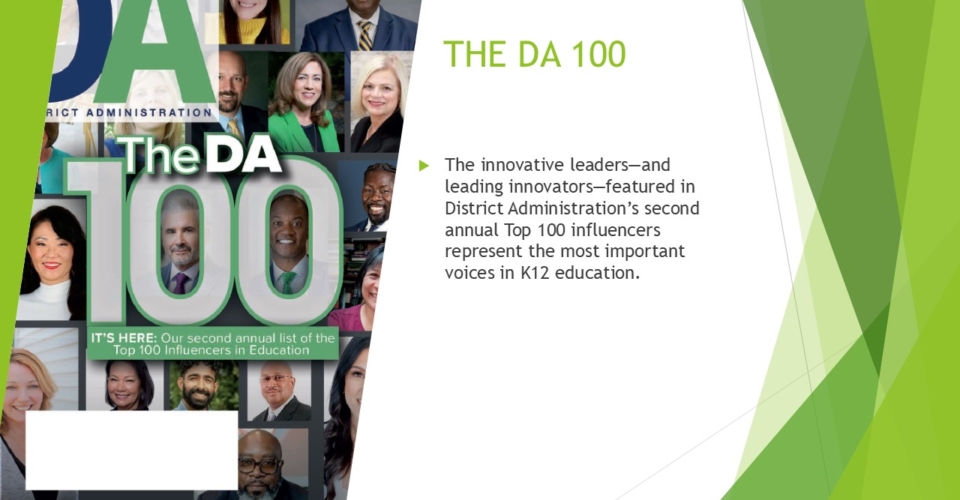Everyone has the basic need to feel safe in their environment, including where they learn. How can we expect our students, educators, and staff to focus on learning and teaching when violence occurs daily in our schools?
As is evident in headlines throughout the past decade, school safety and security are major concerns among U.S. schools. And for good reason. School shootings in the 2020-21 school year rose to the highest number in two decades, with gunfire on K-12 campuses quadrupling from the previous year, according to a recent report from the National Center for Education Statistics.
Additionally, the most recent year of data, from 2019-20, shows that more than 900,000 violent incidents and nearly 500,000 nonviolent incidents occurred in U.S. public schools. The report also found that cyberbullying and student discipline problems related to teachers and classrooms have become more common.
While shootings at schools are rare, they have well-documented, far-reaching impacts on students and school staff and even everyday incidents—such as discipline problems, hate speech, bullying, and student or staff medical emergencies—can impact students’ feelings of safety and security at school. In fact, what students experience directly within their school and their classroom can have an even bigger impact on feeling safe than external events that take place elsewhere, such as school shootings.
What are schools doing to account for this increase in anxiety and perceived violence? And more importantly, is what they are doing effective for students and beneficial to their academic achievement?
How school safety and security impacts outcomes
We already know that there’s a strong link between students’ overall well-being and how safe they feel at school. When students don’t feel safe at school, they can experience symptoms of depression and engage in fights. Research has shown that when students feel unsafe at school, this also has a significant impact on educational achievements.
In addition to increased school absences, which can also impact student achievement, feeling unsafe can make it difficult for students to focus on learning while at school. In fact, it is shown that students who feel unsafe may also be disruptive in the classroom, which in turn can cause a ripple effect on their peers.
Student achievement can also be impacted when instructional time is affected. When teachers and students have to stop their day to deal with a conflict, emergency, or any other incident, that cuts into time that is meant for students to gain understanding and accomplish academic goals. And as teachers already struggle to find adequate time to instruct, plan, grade, and more, this further underscores the importance of administrators addressing this issue and finding solutions that allow teachers and students to address and resolve incidents quickly.
More from DA: What is GPT-4 and why is it better than ChatGPT?
Research shows that when students feel safe, they’re more attentive and efficient in the classroom and have fewer symptoms of depression. Students who are engaged and attentive more often experience long-term academic and life success.
Safety procedures, solutions, and plans with positive impact
When students feel positive about their school environment, they’re more likely to feel safe. So how do we keep students safe while maintaining an environment that is conducive to learning, creativity, and connection? School administrators need to look toward areas where safety and security can be subtle but effective.
Exterior and classroom doors that are working properly and locked are one of the most effective tools against intruders and don’t convey fear to students. Having a secured campus perimeter is another effective way to increase student safety without increasing perceived surveillance.
Wearable emergency response badges given to teachers and staff are discreet and can be worn along with an ID badge. Research has shown that educators and staff members feel more safe and supported when they have a wearable incident response solution. Empowering your staff with the ability to immediately summon help from a first responder team is a far more effective and subtle way to monitor your campus for emergencies than security cameras—you have eyes in classrooms, on the playground, and everywhere in-between.
During my time as a principal, there were multiple instances of fights in school. One specific instance was a rumbling during a talent show. While standing in the crowd, a teacher overheard some students talking about a fight that was supposed to take place after the show. Because of where he was located in the school and with so many people around, he didn’t have cellular service and wasn’t able to alert the administration or security.
The fight ended up happening after the show. A few students and other attendees were arrested or injured. If he had a way to quickly alert administration, he could have summoned help and could have gotten the information to the right people beforehand.
As it relates to school climate, school connection is the single largest contributor to a student’s feelings of safety at school. Administrators must strive to create a school climate and culture that celebrates and values safety, one that encourages participation from everyone, and one that has a core mission and value system with true stakeholder buy-in. When all the adults are on the same page, promoting and demonstrating the same safe behavior, students can see it.



